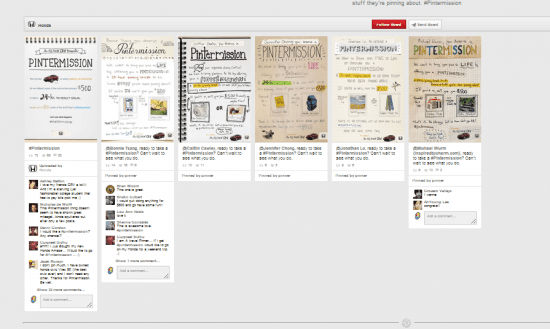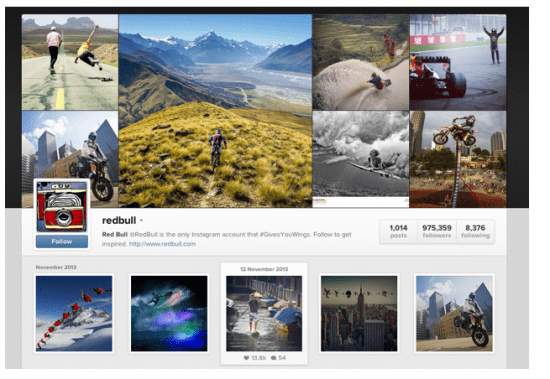What can we learn from brands who were early social media adopters?
As many of the savvier global brands have found, being an early adopter of a new social media site can be an unprecedented opportunity for branding, visibility and platform building. In fact, doing so is a key strategy for staying relevant in an ever-changing business and marketing environment. In essence, being early means getting to be a real leader, determining just how companies will use that new space; it also means getting to connect directly with key influencers before the platform gets too crowded with competitors.
But with that leap of faith comes real risk, and there's always the chance you could fail at a very public level. That, after all, is why many staid brands hesitate to join in, clinging to advertising models that are fast becoming irrelevant. The irony of being a successful early adopter is that you have to be willing to fail, then pick up the pieces and move on.
For a glimpse of how to do it right, we've drawn from this excellent Brandpolis report on the future of social media to compile a few inspiring case studies. Let's take a look at the following inspirational companies and the principles they can teach us.
How Honda uses Pinterest
When Pinterest first launched, few businesses knew what to make of it. In fact, it pretty much embodied what has become the run of the mill social media marketing dilemma: how to get down to business on such a personal medium. The site, after all, isn't that different from a pinboard hanging on someone's office wall, and creating a 'FREE OFFERS!!!' kind of board would only make a brand the subject of mockery. That, however, didn't stop many brands from listing profiles, but many did so without bothering to learn the potential benefits and hazards of the new platform.
Starbucks, for example, made a board to which anyone could pin, but did little to direct its followers, essentially leaving itself vulnerable to negative responses.
As is so excellently profiled in the Brandopolis report, something clicked for the marketing team at Honda when they saw the Starbucks board: Why not turn the open nature of Pinterest into an opportunity for collaboration rather than a vulnerability?
It was a brilliant pivot, and one that would shape the future of marketing on Pinterest. Honda launched a campaign called Pintermission, promising $500 to 5 top pinners to take a break from their pinning habit by taking a spin in a new Honda.
Given how new the platform was at the time, the influencers who received the pins below were suitably impressed, therefore naturally motivated to promote the Honda brand and new car release across their own Pinterest and other social media presences.

Key Takeways
- Know the nuance. Then create your own genre. Pinterest is all about curating projects that are already made, but it often can get in the way of actually creating projects. Honda recognized this nuance, and gave it an intriguing twist. In order to do that, the marketers at Honda really had to know what Pinterest was. So, your first step in being a successful early adopter is to first engage with the platform on a personal level, master its many facets, and then get creative once you know the tools at hand. At such an early stage, you have the potential to be the model everyone else follows from herein out.
- Find the influencers...quickly! At the time Honda launched its campaign, the influencers the company reached out to likely didn't have any idea how valuable they would be to the company. As the platform grows, so, too, does the level of jadedness amongst influencers, making them harder and harder to impress. Once you've got your idea, make sure to reach out to influencers early and really treat them well so that they promote you both now and forever more.
How Dell uses Twitter
Just like with Pinterest, brands didn't really know what to make of Twitter when it first came out (in fact, most still don't). But that—and, to be fair, due to early online mishaps in 2005, when bloggers wrote negative reviews about Dell's tech support and the company had no mitigation strategy—didn't stop Dell from experimenting. As the Brandopolis report details, that mentality of experimentation, supported by the top brass, was really key, as it allowed marketers to really suss out the platform's strengths and weaknesses and build a playbook as they went.
The marketing team started small enough with 'mini campaigns,' like issuing coupons via Twitter that help followers become further aware of brand offerings. This built a small but loyal following well within the company's target demographic, which was enough success to allow for the creation of a team dedicated to figuring out the platform, meeting once a week for 90-minutes to brainstorm and launch an array of further experiments.
From there, Dell developed a more holistic online marketing strategy, training employees not on how to use any one specific platform but on principles of blogging, micro-blogging, business networking, and so forth. This was a crucial step, as so much of marketing today is about operating within an entire brand ecosystem, zigzagging between social media and content marketing without so much of a blink of an eye.
This allows Dell to create much more complete campaigns, like, say, an infographic posted on a blog and promoted on social media. Now this more global strategy is expanding to even encompass offline sales, so Dell can follow the entire customer journey from Tweet to blog to website to in-person sale.
Key Takeaways
- Give employees the space to experiment. Failure happens, and it happens today on a very public scale. There's nothing you can do about that, and sticking your head in the sand while the world moves on isn't going to fix that problem. Instead, embrace the new and quickly developing social media world head on, taking a step back while your employees test out all that the new platform has to offer. As in the Honda example, you can't know a platform unless you give it a whirl; do it without breathing down your employees' necks, and you just might be the innovator everybody copies.
- Zoom down to the micro level, then out to the global. Once you've really mastered the new platform, pull back out to the more global marketing picture. Your efforts on the new social platform shouldn't just connect and sync with your larger marketing efforts; they should be an essential piece of a broader picture. When you learn the deeper philosophies at hand, you'll be much better at implementing much more far-reaching, relevant and motivating campaigns both in general and on your new platform.
How Red Bull uses Instagram
Known for its adrenaline pumping stunts just as much as its actual product, Red Bull has long been associated with early social media adoption. It's not surprising, then, that the company has become a leader on Instagram. I mean, just look at the company's profile page:

Adhering to the lessons of branding 101, everything about the look and tagline of this page scream 'Red Bull,' filled as it is with photos of adventurous people. Of course, this shows an excellent mastery of what is essentially a photo platform, but Red Bull goes beyond this, eagerly embracing the new Instagram Video with a death defying Mount Everest Leap.
More recently, the company has gotten creative with the photo platform, producing this excellent stop motion video compiled from photos from a cliff diving event in Wales.
Though Red Bull actually uses Instagram the least out of all of its platforms, the platform brings in the most engaged following, generating the most likes and comments. Its follower base is also growing rapidly as the brand continues to share news from its Instagram account across all of its many other well-liked social media accounts and avid followers share their work.
Key Takeways
- Do something new. You're on a new platform, so? Do something new and exciting! Red Bull does this all the time with its death defying feats. It also does so by having fun with the platform, like with its Instagram stop motion video. Don't try to get creative with witty Facebook banter on Instagram; know the platform, and have fun with what you've got.
- Work across platforms. Notice a theme here? Just like Dell, Red Bull's social media efforts are highly coordinated across many different platforms. That's important for Instagram, as users can only comment and like, not share. But more importantly, Red Bull really sees social media as a form of media broadcasting, and its marketing materials as media. No matter what social media platform you're on, old or new, keeping that mentality will see you through as you master the new tools at your disposal.
How H&M uses Google+
As one of the earliest Google+ adopters, H&M is also one of the platform's biggest success stories. Because H&M has a wide following on a number of social media platforms, it would have been easy for the low-cost fashion company to simply re-post its old material in this new, unknown social arena. Instead, H&M stuck to its wider strategy of posting unique items to G+ that it felt would be directly relevant to its specific audience of followers.
Probably because G+ is so visual, that strategy wound up being 'inspiration' rather than, say, promotions or company news. From striking fashion photos to engaging videos, H&M posts garner a large number of shares and +1s. The G+ page also includes promotions specifically for G+ followers, as well as sneak peeks available nowhere else.
Key Takeaways
- Make something new. Just because you've got a great presence on another platform, doesn't mean you should simply re-post your updates. When you create content that's unique to your new platform, you'll always be providing something new and interesting to your followers, incentivizing them to hook into your brand across platforms. Why else would they follow you on this new site unless you provide them with something new?
- Take the time to master the platform. The great thing about new social media platforms is that their parent company really wants you to understand the service its providing, as do many associated companies. Google, for example, has many help pages and case studies, while the company Simply Business compiles excellent advice from across the web in its extensive guide to Google.
Final Thoughts
New social media platforms, just like all new things in life, come with risks as well as many rewards. Take the time to get to know your social media platform and really master all of the tools, and you'll expand your reach and establish yourself as a savvy industry leader. That's a pretty great bet, and one that will help prevent your brand from looking irrelevant in a rapidly shifting marketplace.

Thanks to Rosie Scott for sharing her thoughts and opinions in this blog post. Rosie is a digital content strategist at an online marketing company and an avid blogger. You can find her at
The New Craft Society or connect on Twitter
@RosieScott22.





 Thanks to Rosie Scott for sharing her thoughts and opinions in this blog post. Rosie is a digital content strategist at an online marketing company and an avid blogger. You can find her at
Thanks to Rosie Scott for sharing her thoughts and opinions in this blog post. Rosie is a digital content strategist at an online marketing company and an avid blogger. You can find her at 


